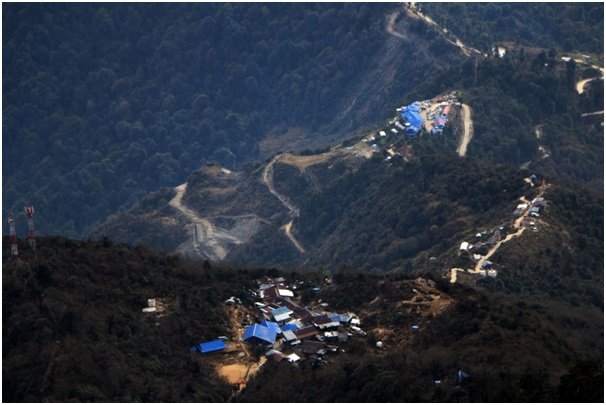Unemployment and Evolution of New Socio-Economic Class

The physical as well as mental effort that is reasonable for the production of goods or services which generates elements of livelihood for workers is known as a ‘work or employment or job’. A person of working age (15+) as defined by ILOSTAT; who is willing to work, actively searching for work, but not getting the work during the specific reference period is known as a ‘non-worker’ or unemployed. Karl Marx termed the working class as ‘Proletarians’. As per Marx, “The people in the class of modern wage laborers not having own means of production and are reduced to sell their labor power in order to live” are the proletariats. If so, in which class do non-working people belong? And is there class consciousness among them?
To answer these question, we need to understand what actually class mean and the class formation process in society.
The ‘social class’ is a concept to define people according to several psycho-socio-economic phenomena, contexts and material conditions in society. In the central idea of the Marxist concept; class means a group of people having a common relationship to the factors of production and in terms of processes of exploitation. The Marxian concept focuses on the process of production of goods and services where the input of the worker is an important and crucial factor for profit to investors; but is undermined and exploited by not giving justifiable wages or credit to them. Marxian school of thought is more focused on the socio-economic features and conditions of working-class people. The Weberian tradition conceptualized class as the economic life chances of people focusing on the features of the work relation available within existing labor markets and work organizations. The demand and supply of the labor market as well as its feature determines the opportunity to get engage with economically beneficial work or economic life chances. The position of an individual within the market and family is the key determinant of the wage and material well-being of a worker. The Durkheimian tradition divides workers according to their occupation. The homogeneity affects people’s lives and then class locations can be identified according to the highly disaggregated categories within systems of stratification. That concept classifies people according to income and material status achieved through occupation. Bourdieu’s class analysis defined class according to the features and dimensions of capital. According to this concept, class is a multidimensional space of power-conferring resources that can shape both the opportunities and the dispositions of actors. A different perspective was provided by Jan Pakulski arguing that the Marxist and Weberian concept of class is no longer an empirically useful category. According to him, Inequality may continue to be an important issue in contemporary society but is no longer organized along class lines. The contemporary complex world is full of socio-economic inequality where limited people have control over almost material wealth and markets. In this context, the inequality continues but the collectivism of the working class is reducing. Thus, a class is a perpetual entity of society that defines the psycho-socioeconomic status of people.
While elaborating on the class formation process within the society; a historical review through a change in human behavior and social factors is needed. Different chronological phenomena of history have created different classes of people. The formation of a socioeconomic class is the result of a complex interaction between various psycho-socioeconomic factors. These interactions are guided by the contextual need of people. The contexts always change with the phenomenon. Simultaneously the characteristics of people are also changeable with context. A similar psycho-socioeconomic characteristic of people creates a stratum that is different from the previously existing social identity. This stratum sometimes contains huge population and their social, political, psychological, and economic characteristics. And these characteristics are enough justifiable to declare them a social class.
Since the socio-economic context had been changed from starting of this century; the non-working population (Unemployment) is increasing. Societies of the 21st century have faced rapid advancements in technology. Artificial Intelligence (AI) has played a catalytic role to change the contextual need of people. It has reshaped the demand of the market. The market dynamics have concentrated the wealth in limited people’s hands. People’s basic need has been changed. A life without the internet is out of imagination. People’s lifestyle is being sophisticated day by day. The technology is boosting the productivity with same input and cost. It is replacing the workers who have no or little knowledge or no skill in it. Similarly, this century is facing the extreme negative effect of climate change and global warming. Dependents of marine and the Himalayas are being displaced from their root of life. Limited natural resources and increasing informality have boosted the unemployment rate. Increasing the incomplete worker population (Underemployment) is a big challenge for social security.
The non-working (unemployed) people:
In all psycho-socioeconomic contexts and phenomena, the characteristics of non-workers are similar since they all do not have anything to do. In terms of the Marxist tradition, the non-working class is the people who neither have their own means of production nor the opportunity to sell their physical as well as mental power for life. They are the people who are not counted as a factor of production. There is no individual exploiter but the market dynamics and the system is. By thinking through the Weberian tradition, the definition is also justifiable. The economic life chances determine the material status of an individual. When there is a huge population who is not getting the chance to engage in economic activities, their psycho-socioeconomic status will be the same. And that makes a stratum of non-working people within the society. The intellectual and physical power of people is a determinant of material as well as psycho-social well-being and is the factor on which the opportunity for life chances is dependent. The similar context of not getting life chances and similar psycho-socioeconomic characteristics bound them together within the same class.
Class consciousness among them:
Marx and Engels in their communist manifesto believed that their unity depended upon the class consciousness; class in itself and then class for itself. The consciousness arises from ideology or philosophy. If there is no political ideology for conscious non-workers, the class consciousness among them is far imaginable. In spite of having enough justifiable reasons; none of the historical as well as existing political ideologies have defined non-workers as a social class.
The class consciousness among non-workers is in a very primitive stage and is too much difficult to rise. Because of their empty hands, empty pockets and empty stomachs; they could not establish effective contact with each other, and collective interest becomes weak. Their psycho-socioeconomic status is the main barrier to unity. They usually could not form organizations like trade unions and etc. which fight and favor them. Another challenge to be unified is that: unemployment is temporary. Very few people stay unemployed for their whole life. But always there will be another candidate ready to take the unemployed position if someone graduates. Thus this is a perpetually recycling class; which is not listened to, not addressed, and untouched since the long history of class advocacy.






Leave Comment